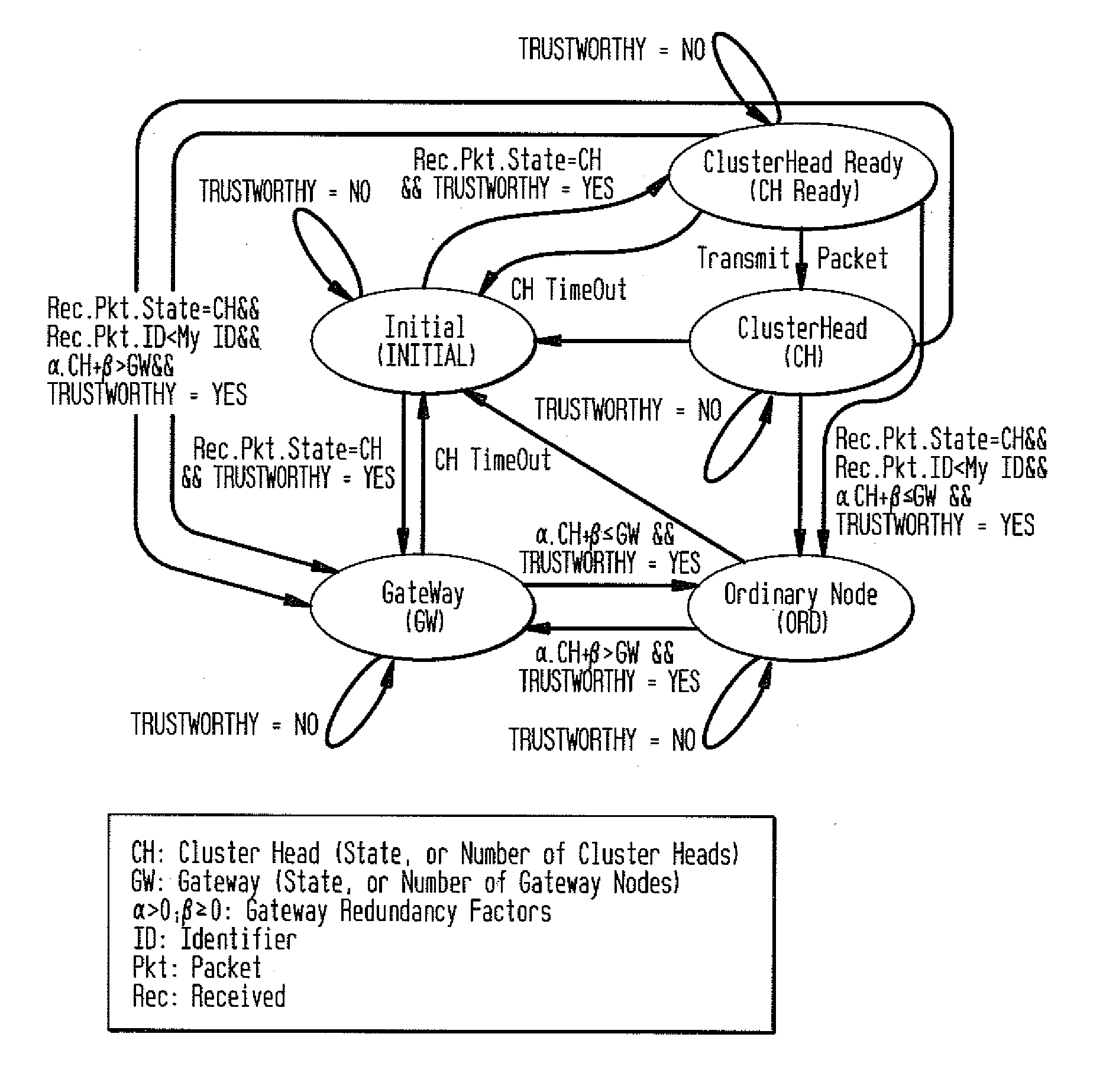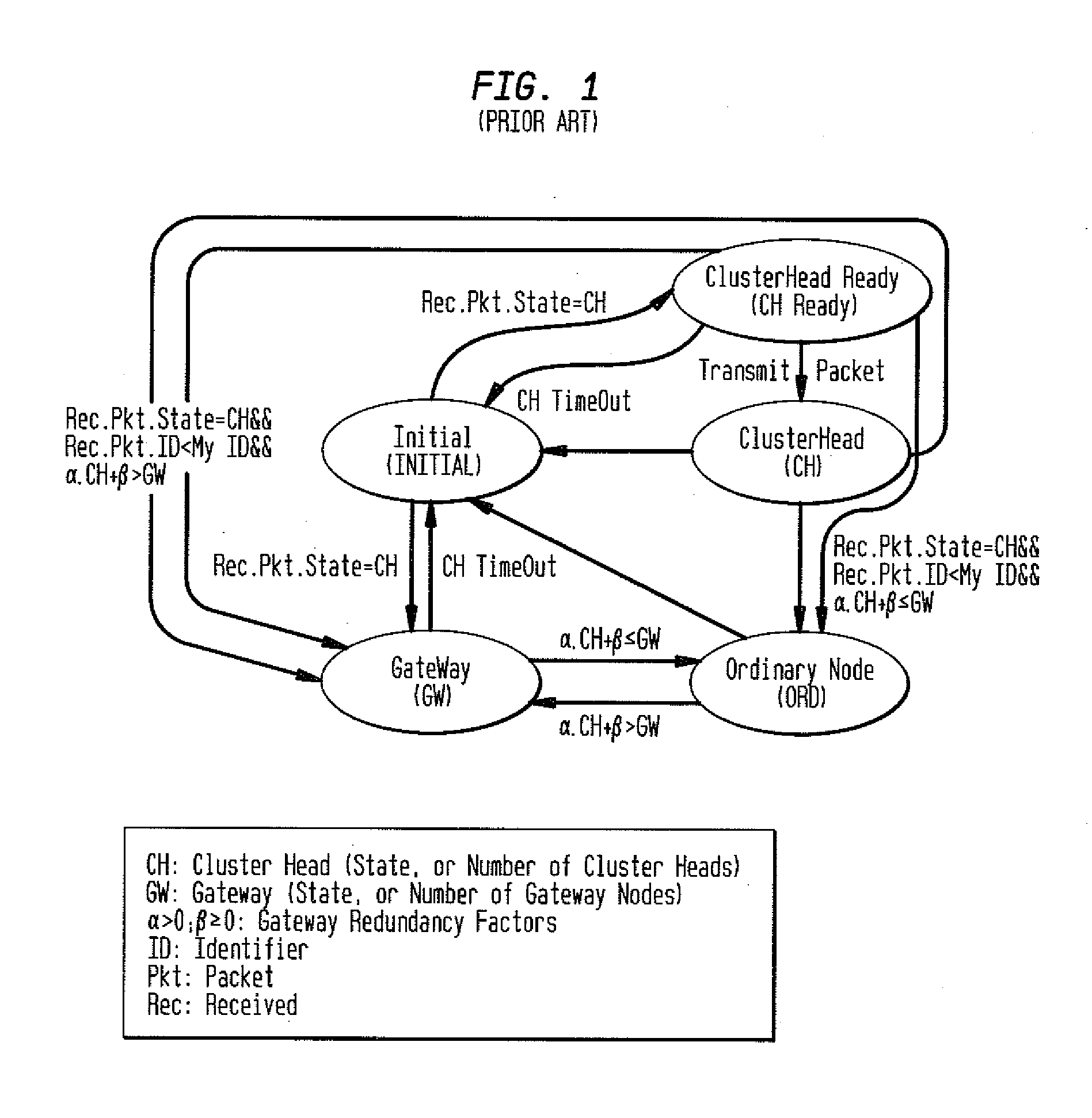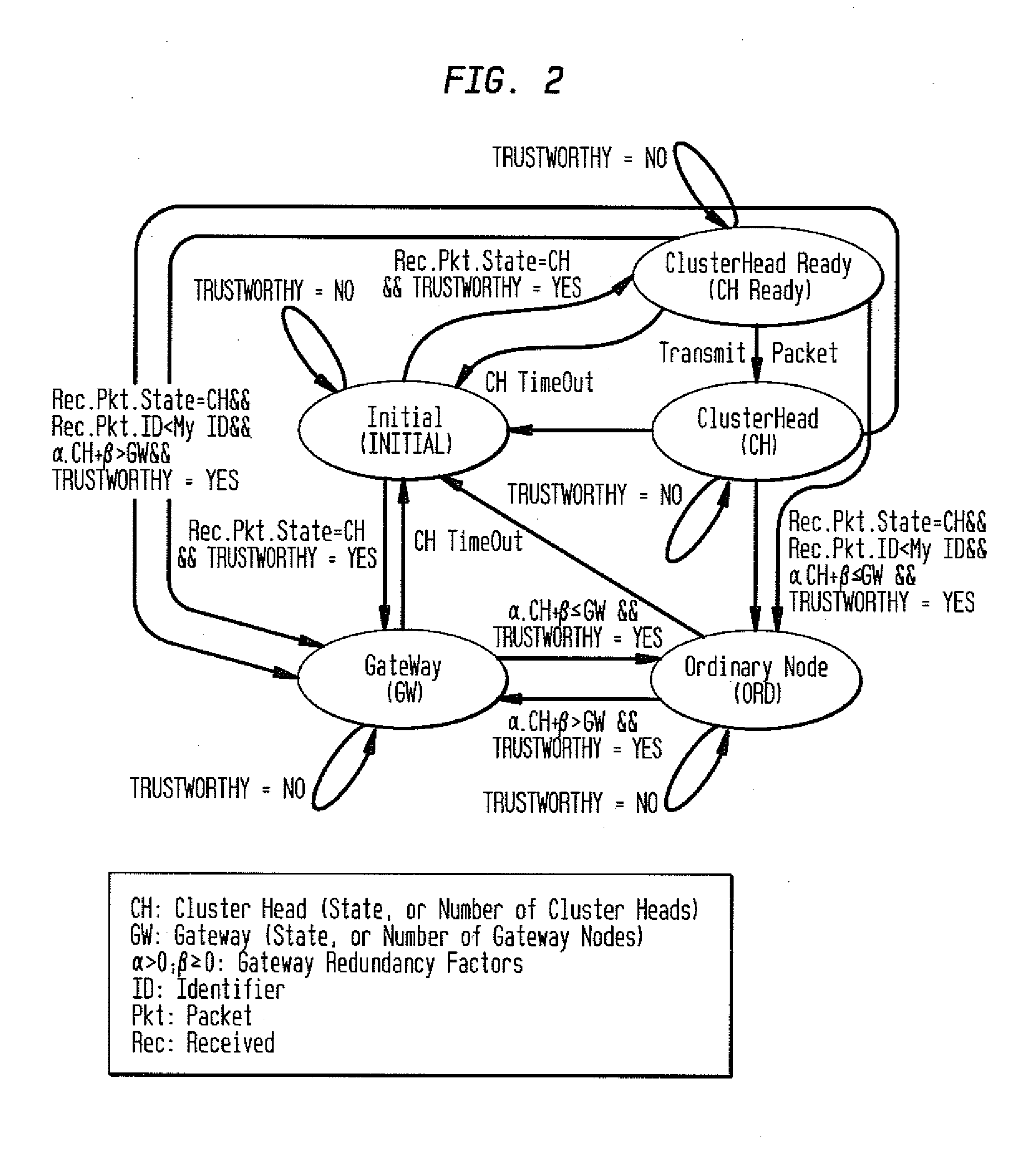Security Method for Mobile Ad Hoc Networks with Efficient Flooding Mechanism Using Layer Independent Passive Clustering (LIPC)
- Summary
- Abstract
- Description
- Claims
- Application Information
AI Technical Summary
Benefits of technology
Problems solved by technology
Method used
Image
Examples
Embodiment Construction
[0024]The inventive security system and method for PC-based ad hoc networks retains the Clusterhead (CH) and Gateway (GW) node selection framework developed for LIPC. The novel technique adds the capability to protect each node from malicious intruder attacks that could force illegal node state transitions and compromise secure routing of control packets or user traffic by adding a ‘Trustworthy’ event to each state in the unsecure LIPC cluster formation protocol. LIPC cluster formation does not require extra control packets, e.g., hello message with neighbor lists, to form clusters, nor an initialization period to enhance flooding efficiencies. Furthermore, LIPC operates in soft state clustering mode with a timeout feature to preserve freshness of the state of each node. LIPC nodes constantly monitor communication activities within their radio ranges in order to detect anomalies in the data received from surrounding nodes, and each LIPC node either allows or prevents a neighboring n...
PUM
 Login to View More
Login to View More Abstract
Description
Claims
Application Information
 Login to View More
Login to View More - R&D
- Intellectual Property
- Life Sciences
- Materials
- Tech Scout
- Unparalleled Data Quality
- Higher Quality Content
- 60% Fewer Hallucinations
Browse by: Latest US Patents, China's latest patents, Technical Efficacy Thesaurus, Application Domain, Technology Topic, Popular Technical Reports.
© 2025 PatSnap. All rights reserved.Legal|Privacy policy|Modern Slavery Act Transparency Statement|Sitemap|About US| Contact US: help@patsnap.com



